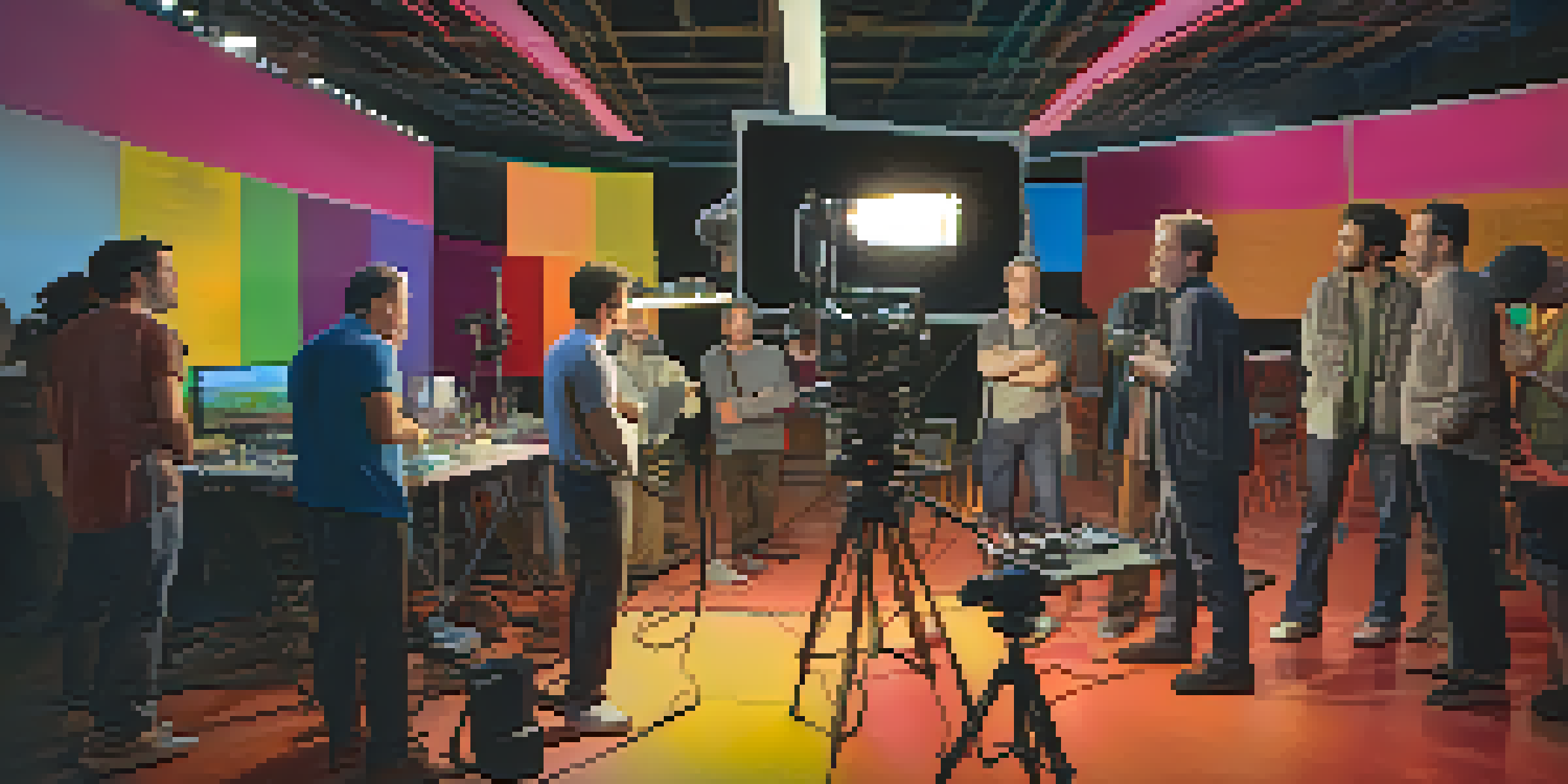Collaboration Between Directors and Editors in Film Production

Understanding the Roles of Directors and Editors
In film production, the director is often seen as the visionary, guiding the story's emotional arc and overall aesthetic. They make crucial decisions regarding casting, cinematography, and artistic direction, ensuring that the film aligns with their creative vision. On the other hand, editors play a vital role in piecing together the raw footage, shaping the final narrative and pacing of the film.
The Importance of Pre-Production Meetings
Before filming begins, directors and editors should engage in pre-production meetings to establish a clear understanding of the project. This collaboration allows both parties to discuss thematic elements, pacing, and potential editing techniques that could enhance storytelling. By aligning their visions early on, they set a strong foundation for a more cohesive and efficient production process.
Directors and Editors Collaborate
The collaboration between directors and editors is essential for shaping the film's narrative and ensuring a cohesive storytelling experience.
Communication During Filming
Effective communication during filming is crucial for both directors and editors. Directors must convey their vision on set, while editors need to understand what footage will best serve the story. This dynamic exchange helps ensure that the shots being captured will allow for a smooth editing process later, ultimately saving time and resources.
The Editing Process: A Collaborative Journey
Once filming wraps, the editing process begins, and this is where collaboration truly shines. Directors work closely with editors to sift through footage, make creative choices, and refine the narrative flow. This partnership is essential, as directors may have specific ideas about pacing or emotional beats that editors can help realize through their technical expertise.
Communication is Key During Filming
Effective communication during filming helps directors convey their vision while editors capture the necessary footage for a smooth editing process.
Feedback Loops: Iterating on the Cut
The editing phase often involves multiple rounds of feedback, where directors review cuts and suggest changes. This iterative process allows for creative experimentation, as directors and editors can explore different angles, transitions, and effects. It’s a dance of creativity that ultimately leads to a polished final product that reflects the original vision.
Balancing Creative Vision and Technical Constraints
While directors focus on storytelling, editors must also navigate technical constraints such as time limits and budget considerations. This balance can lead to innovative solutions, as editors find ways to maintain the director's vision within practical parameters. Their collaboration fosters a creative environment where both artistic and logistical aspects are harmonized.
Trust Enhances Creative Process
Building trust between directors and editors allows for fresh perspectives and a more dynamic creative collaboration, leading to outstanding results.
The Role of Trust in Collaboration
Trust is a cornerstone of the collaboration between directors and editors. When directors trust their editors' judgment, they can relinquish some control, allowing for fresh perspectives on the material. This trust not only enhances the creative process but also fosters a positive working relationship that can lead to outstanding results.
Celebrating the Final Product Together
Once the final cut is complete, the celebration of the finished product becomes a shared achievement. Directors and editors often take pride in the collaborative effort that brought the film to life, acknowledging each other's contributions along the way. This camaraderie not only strengthens their professional bond but also enhances future collaborations, as they continue to learn from one another.